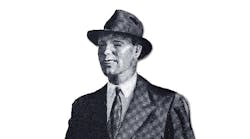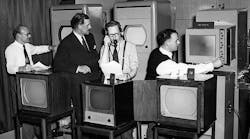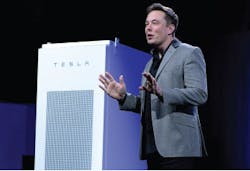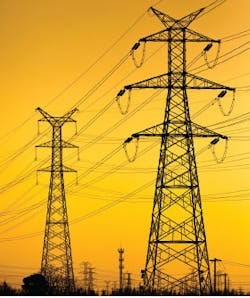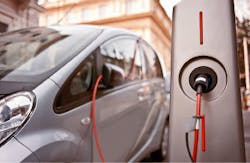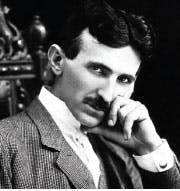In an industry with as much tradition as the electrical business, it’s always fun to reminisce about the past. But Electrical Wholesaling’s 95th Anniversary is also a perfect opportunity to take a peak over the next hill and offer a wish list of the 10 things that could have the most impact on this industry in the future. Electrical Wholesaling published a similar FutureView article for its 75th anniversary 20 years ago in 1995, and the trends we saw back then seem pretty quaint in retrospect, considering all the changes that have happened since.
For instance, in that article, we talked about how “mind-blowing amounts of information” would be transmitted over the Internet. The World Wide Web existed back then, but it wasn’t even a deer trail through the thicket of digital information compared to the mega-land superhighway that now carries a bazillion pieces of data every second. Since that time, changes and opportunities have hit the electrical wholesaling industry at warp-speed. Some of these changes will be fueled by technology and others by more efficient ways of bringing electrical products to market. Following is wish list Electrical Wholesaling’s editors put together of the technological improvements we think could have the most impact on the electrical market.
1. A day when the solar and wind industries aren’t so dependent on federal incentives. The growth of the solar and wind markets over the past decade are impressive indeed. But they will become even more widely accepted when they don’t rely on federal tax credits and other financial incentives to become more cost effective. New-generation solar cells have come a long way over the past few years in how efficiently they convert sunlight into electricity, but they still have a ways to go.
Wind turbines don’t produce electricity when the wind doesn’t blow, and photovoltaic (PV) cells don’t do much in the dark. And there are times when turbines and PV cells produce more electricity than the power grid needs, so electric utilities are looking to smooth out this intermittent flow of power into their grid with large-scale energy storage systems. Elon Musk’s recent announcement that Tesla would begin producing the Tesla Powerpack battery for utilities and Powerwall battery system for homes is quite intriguing and it will be fascinating to see these products fulfill his promise of a revolutionary battery storage technology.
In the coming years, electric utilities will be in the middle of a huge battle between proponents of centralized versus decentralized power production. Some utilities are doing all they can to integrate solar, wind and other renewables into their existing power structure because they need to produce more power to service their customers and these energy sources are less expensive than building traditional power plants. But other utilities that don’t see the same future increase in power demand seem to be spinning out miles of legislative red tape to slow down the advance of decentralized power production from renewables.
4. Cost-competitive electric vehicles you can drive without a touch of range anxiety. The move by Tesla and other auto companies into the electric vehicle market has been fascinating to watch. While it hasn’t quite yet totally revolutionized the auto industry, once less-expensive, dependable, long-range batteries are developed, watch out. The sales opportunities for electrical distributors, manufacturers and reps with EV charging systems and related products such as circuit breakers, cabling and enclosures will be tremendous.
The six-figure investment it reportedly takes to build and maintain a top-shelf online storefront in the electrical market has thus far proved to be an impediment for their widespread use in the electrical wholesaling industry. Is there a better way out there for smaller distributors?
6. A related challenge is the need for a dependable, easily updated, robust and easy-to-use online database for electrical products. This database would include product specifications, pricing, installation videos, selling tools and other technical and marketing data that electrical manufacturers, independent reps, distributors and end users can integrate into their product selection, shopping and fulfillment processes. IDEA, Rosslyn, Va., has done a massive amount of work toward making this a reality and has built out a way to transmit and store error-free data. But more work needs to be done on the rich data end of the equation so distributors can have easy access to cut sheets, installation videos and other selling tools.
It will be fascinating to see where electrical distributors fit into the channel for selling LED lighting systems over the next decade, and which companies solve the inventory management riddle of knowing just how much to stock in a product where the technology is changing so fast.
9. Adding brains to gazillions of electrical devices as part of the Internet of Things movement sparks a whole new avenue of retrofit work. This one isn’t too hard to imagine happening, so it will be important for everyone in the electrical channel to keep up with new products that have sensors with IP (Internet Protocol) addresses so they can be monitored or controlled remotely.
10. More distributors buy into the concept of providing end users with one-stop shop for a package of electrical and non-electrical products by partnering with and or acquiring distributors from other verticals. Turtle & Hughes, Linden, N.J.; Schaedler YESCO, Harrisburg, Pa.; Rumsey Electric, Conshohocken, Pa.; and Winwholesale, Dayton, Ohio, have been doing this for years, but the concept could work in many other regional markets.




